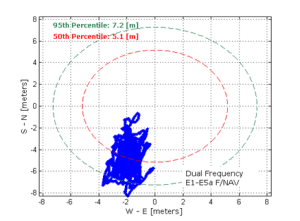The in-orbit validation (IOV) of Galileo has been achieved: Europe now has the operational nucleus of its own satellite navigation constellation in place, the world’s first civil-owned and operated satnav system.
In 2011 and 2012 the first four satellites were launched into orbit. These satellites were combined with a growing global ground infrastructure to allow the project to undergo its crucial IOV phase.
Sylvain Loddo, ESA’s Galileo Ground Segment Manager: “IOV was an intermediate step with a reduced part of the system required to demonstrate that the future performance that we want to meet when the system is deployed is effectively reachable. It gives evidence that we are on track”.
Didier Faivre, ESA Director of Galileo and Navigation-related Activities: “Europe has proven with IOV that in terms of performance we are at a par with the best international systems of navigation in the world”.
On 12 March 2013, Galileo’s space and ground infrastructure came together for the very first time to perform the historic first determination of a ground location, taking place at ESA’s Navigation Laboratory in the ESTEC technical centre, in Noordwijk, the Netherlands.
Generation of navigation messages enabled full testing of the entire Galileo system carried out all across Europe.
The test results show that Galileo is successful.
Galileo’s observed dual-frequency positioning accuracy is an average 8 m horizontal and 9 m vertical, 95% of the time. Its average timing accuracy is 10 billionths of a second (its performance will increase as more satellites are launched and ground stations deployed).
For Galileo’s Search and Rescue, SAR, function (collaboration with the international Cospas-Sarsat programme), 77% simulated distress locations can be pinpointed within 2 km, and 95% within 5 km. All alerts are detected and forwarded to the Mission Control Centre within a minute and a half, compared to a design requirement of 10 minutes.
Following this success, the build-up of the Galileo system can proceed to placing the remaining satellites into orbit and deploying further ground stations.
The next two Galileo FOC satellites are currently at ESTEC, completing their testing to be cleared for flight. Over the course of 2014, six more satellites are planned to join the existing four in three separate Soyuz launches.
Galileo’s initial services are scheduled to start by the end of this year.
The definition phase and the development and IOV phase of the Galileo programme were carried out by the ESA and co-funded by ESA and the European Commission.
The Full Operational Capability phase of the Galileo programme is managed and fully funded by the European Commission. The Commission and ESA have signed a delegation agreement by which ESA acts as design and procurement agent on behalf of the Commission.

